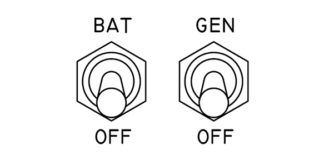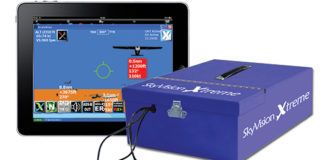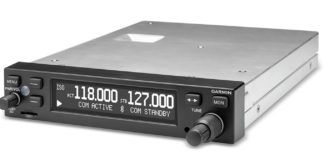
Deforestation Explained
I just went online and re-subscribed (belatedly) to KITPLANES. I admit I intended to let it run out, since after building and restoring a number of airplanes over the years, I’m not likely to build another. Then I read the latest Sport Aviation. Despite my loyalty to the EAA, their primary magazine emphasizes a trend over the last 10 or so years to become another AOPA. I’ve been a member of both organizations for nearly 30 years. How could I not support KITPLANES when it now represents the major source of print information for airplane builders? And does it quite well under [Cook’s] leadership, by the way. The April issue, for example, had relevant, interesting and honest articles far surpassing the corresponding issue of the slick and glitzy Sport Aviation.
As editor of the EAA Chapter 59 newsletter for more than 10 years, I know you can’t be all things to all people, but we strive to keep Experimental in more than just our name. (Our 16-page newsletter is available to all at our eaa59.org web site.) I belong to the Vintage division of EAA as well as the Antique Airplane Association, so keeping up with their periodicals and classic motorcycle stuff (metal shaping is my passion) makes me wonder if I’m deforesting too many trees.
As a retired airline captain, I’m also a trained penny-pincher (ask me how copper wire was invented). I consider KITPLANES a worthwhile investment in the future of homebuilt aviation. Keep up the good work!
Mike McMains
Engine Guidance
I am currently at the stage of searching for an engine for my Glasair III project, so articles like the 2011 Engine Buyer’s Guide in the April issue are especially interesting to me. I intend to power the aircraft conventionally, with a Lycoming-type IO-540. At this stage, I am looking at all options from new to a core that can be rebuilt. Recognizing the obvious difference in entry fee, the core option has greater appeal. There was, however, a statement in your guide that caught my attention as an additional option: "Lycoming is continuing direct sales of its Thunderbolt line of Experimental engines, though the smaller shops have been doing well selling versions of Lycoming ‘kit engines,’ which are essentially all-new engines delivered in pieces and assembled to order."
How tantalizing. Which shops? How much does this option cost? Can I buy the box of parts and assemble it, or does the "smaller shop" assemble it? Also what is meant by "doing well?" I have looked around on the Web and found only one case of someone buying a box of engine parts and building from scratch (search for "Building an Engine from Scratch" by Andy Millin). In the end, he didn’t recommend going this route. Are there other stories out there? I cannot find them. Any guidance that you can give so I can research the details of this option would be greatly appreciated.
Dan Brown
The Lycoming Kit Engine Program has been around since late 2005, and does provide an "engine in a box" for professional shops to assemble. The benefit is that each shop starts with all new components from Lycoming-in essence, an entire engine just not yet assembled. Currently, four shops are approved as Kit Engine assemblers: Aero Sport Power in Kamloops, British Columbia; G&N Aircraft in Griffith, Indiana; Teledyne Mattituck Services in Mattituck, New York; and Triad Aviation in Burlington, North Carolina. This program is not open to customer assembly of engine components.-Ed.
Snark Attack
How long ago did [editor Cook] return from outer Mongolia? I can only assume it hasn’t been very long. Your "Around the Patch" and the flight review in the April issue is proof that you haven’t kept up with light aircraft in the U.S. for the past 30 years. And the teaser on the cover, "Under $20,000," tells me you haven’t caught up with events in ultralight aviation since your return.
Wait! I have it. You must have stock in the company building the Belite kits. Otherwise, why would you go on and on about it flying like a "real" airplane-and we’re going to hear this more often in the future. Really? This article could have been written in the mid-1980s and copies in tone those I distinctly remember reading at that time, "lawn-chair flying machines" and all.
Do you remember the Mini-Max, first flown in 1984, around the time the first Challengers were also being flown? And what about the Hawk series? And aren’t there quite a few Fisher designs still available? I can show you a long list of 103-legal designs dating to and before that era that flew like "real" airplanes, and a few that still can be built in half the time quoted for the Belite for less than half the money; I assure you they fly as well or better. I’ve personally built two Mini-Max designs, one of which fit in the ultralight rules and flew just like, well, you know.
I’ve seen this Belite bandwagon climbed on by other publications and honestly don’t understand what is so great. They took an existing design, lightened it slightly while increasing the cost significantly with exotic materials, and are lauded as if they are single-handedly saving the ultralight category of aircraft. Take another look at what’s available in the 103 ballpark, and you might see a lot of designs you would like better than the Belite.
Dean Hankins
Write to [email protected] or mail a piece of your mind to:
KITPLANES, 203 Argonne Ave., Suite B105, Long Beach, CA 90803.




